How to Open a Combination Lock
These combination locks have almost become standard in our daily lives, from school lockers to gym ones and even safes. Though it may be daunting at first, mastering how to open a combination lock will save you time and frustration on many occasions when using them. In this comprehensive guide, I will walk you step by step through how to quickly open a combination lock.
Table of Contents
Step 1: Clearing the lock
It is important to thoroughly clear the lock before discussing the details of how to open it. This may be a minor step for some, but it makes all the difference in the world when the process is applied.
- Where is the shackle? It’s the U-shaped piece that opens and closes the lock.
- Turn the dial clockwise at least three complete revolutions.
- Stop turning the dial when you feel slight resistance or a “click” sound.
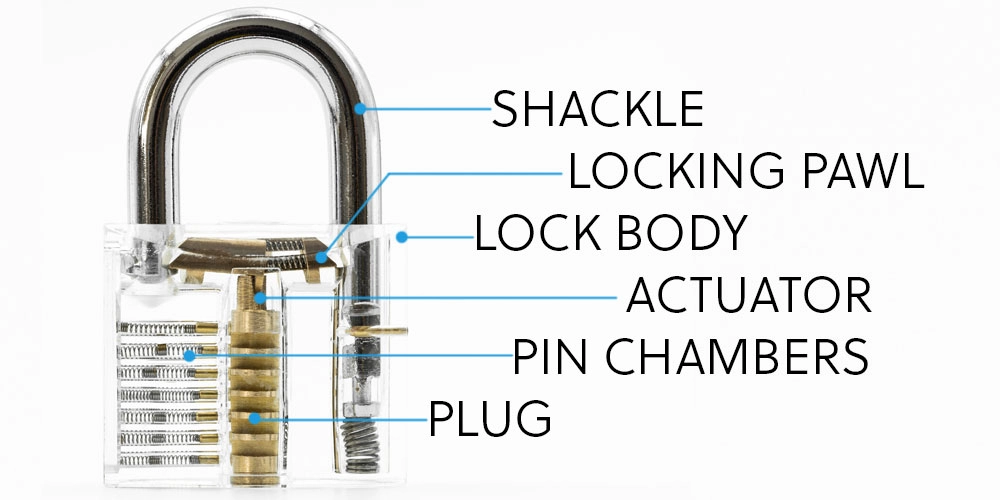
This is a crucial step, as it aligns the lock’s internal mechanism so that it is ready to receive the combination.
Step 2: Starting with the first number
Now that the lock is clear, dialling the combination is time. The first number in the combination is a doozy because it starts a chain reaction for the other steps.
- Find the first number in the combination example; if the combination is 15-25-10, the first number is 15.
- Turn the dial to the correct three times clockwise, stopping on the first number on the second full circle.
- On the third time around, stop at the first number that the dial comes to, aligning the dial with the lock’s marker or indicator.
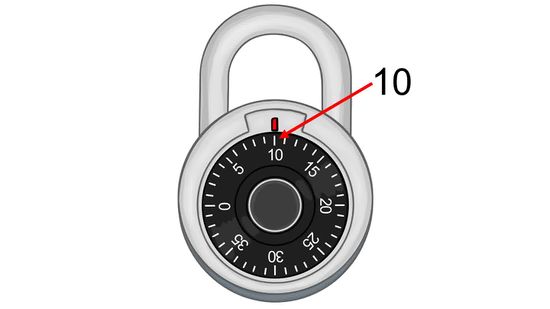
Turning the dial exceptionally slowly and carefully is significant to the target number.
Step 3: Rotating the dial to the second number
Now that the first number has been determined let’s continue to set the second number for your combination.
- Spin the dial counterclockwise, passing once through the number of the second digit.
- Stop on the second number, aligning the dial with the marker or indicator on the lock.
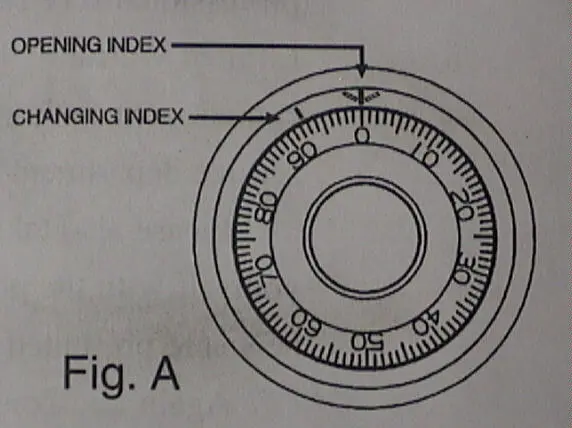
At this time, you will feel slight resistance or a faint “click” sound as the lock starts to engage.
Step 4: Rotating the dial to the third and final number
The last and final number in the combination is the third and final step before opening the lock.
- Turn the dial clockwise, passing once over the third number.
- Stop on the third number, ensuring the dial aligns with the marker or indicator on the lock.
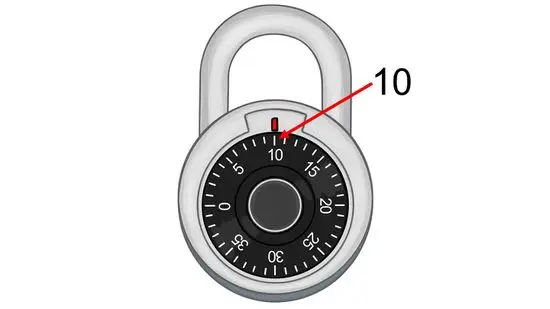
By this point, if you have done it correctly, you should feel a noticeable resistance or audible “click” sound that indicates the lock has fully engaged and the door is ready to open.
Step 5: Opening the lock
After correctly entering the combination, the last thing to do is open the lock.
- While keeping the dial aligned with the third number, pull or lift the shackle upwards.
- It should open the lock quickly, where the shackle can be removed from the locking mechanism.
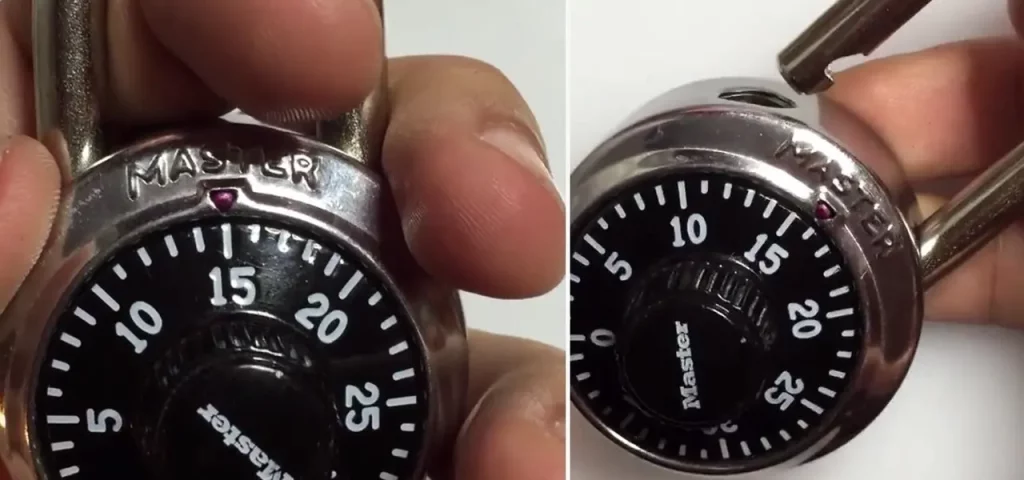
If the lock instances are opened in a few cases, never force repeat the steps according to correctness.
To help you walk through this process confidently, we have provided a step-by-step guide that you can refer to at any moment when you want to open a combination lock. Download our free guide today and unlock the secrets to making combination lock mastery a breeze.
Troubleshooting common issues
Even when you are paying great attention to the steps, problems may arise while opening a combination lock. Following are some commonly faced problems and their solutions:
- The lock won’t open after correctly entering the combination: The lock does not open upon entering the correct combination. This may be due to various factors, including a jammed mechanism or something out of alignment. Try resetting the lock again and repeat. If it doesn’t work, it is time to get a professional to help or change the lock.
- Stuck or hard-to-turn dial: The issue may be the accumulation of rust, dust, and other particles inside the locking mechanism. Tap the lock on a solid surface to dislodge possible debris. Apply a small quantity of lubricant, such as WD-40 or lubricating oil, to the dial and mechanism.
- Illegible/worn-out combination numbers: When the combination number on your lock is worn out, you can no longer see them. Other means of opening the lock would then create ways to contact the manufacturer or other professional locksmithing services.
Tips for opening combination locks efficiently
While the step-by-step process was appropriate, several other helpful pointers will enable you to open combination locks more efficiently, including but not limited to:
- Practice regularly: The more frequently you practice opening combination locks, the more comfortable and familiar you will become with the process. Consider buying a practice lock or use one that you can access for regular training.
- Establish a rhythm: Fall into a steady rhythm while turning the dial, which will help you avoid constantly overshooting or falling short of the target numbers.
- Listen and feel for feedback: Draw on the input from the lock, such as resistance, clicks, or other audible and tactile signals. These can give you an idea of whether you are on target or if adjustments need to be made.
- Keep the lock clean and lubricated: Keep the lock clean and oiled. This will prevent sticking or operating problems in the dial, making it easier to manage.
Also Read: BIOS Tuning for Enhanced RAM Overclocking: A Detailed Guide
Video Tutorial: How to Open a Combination Lock
Frequently asked questions
Q: Can a combination lock be changed or reset?
A: Yes, most combination locks can be reset, or their combinations changed. The process varies with the lock’s specific type and manufacturer, so detailed instructions are necessary for your lock.
Q: Are combination locks secure?
A: Combination locks are generally secure when properly used and with potent combinations. However, they may be a little weak against particular kinds of attacks, such as brute-force attempts or manipulation techniques. It is always worth using high-quality locks and following security best practices.
Q: Can a combination lock be opened without knowing the combination?
A: Though it is possible to open a combination lock by manipulation, decoding, or brute-force attempts without knowing the combination, all such techniques are essentially illegal and may well damage the lock. So, it is advisable to find professional help or replace the lock in instances when one needs to remember the combination.
Conclusion
Although daunting at first, opening a combination lock will soon become a task of the most trivial nature, provided one is patient and willing to practice. By following the detailed step-by-step guide in the article, you will be OK with mastering the art of combination lock opening. Remember to take your time, pay attention to the feedback from the lock, and don’t hesitate to seek professional assistance if you encounter persistent issues. With proper teaching and a little practice, you should be a professional in opening combination locks to keep your valuables and make them accessible when needed safely.







